Spotlight on Jay Westcott
May 14, 2015
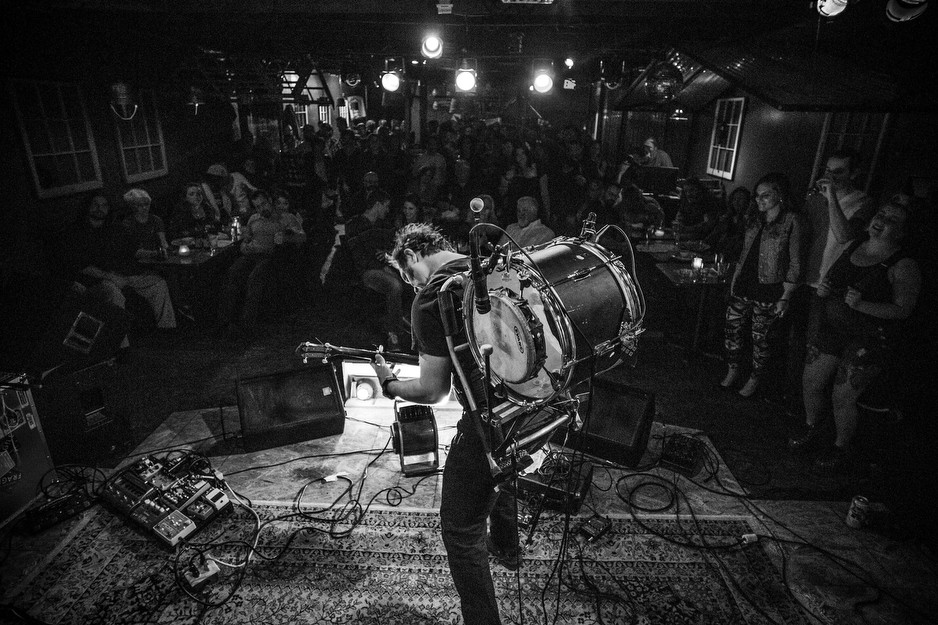
TID:
Please tell us about the image's context, background, the assignment, etc. What attracted you to the story originally? How did you two meet? How did you decide this would make a good story?
JAY:
I first met Phillip 20 years ago. He was in a rock/alternative band called The Hollowbodies with his cousin Shea. Shea was also in a band called Rip Dizzy with my buddy Shawn, so I first met Shea. The Hollowbodies had signed to a major label, and couldn't play any shows until their album came out. I met Phillip briefly at a stealth show, and then again a couple years later at a dinner with friends. Phillip, for lack of a better word, had this aura about him. He was quiet, but when he spoke you knew it would be deep, insightful. It's such a contrast to him on stage, where he is just a powerhouse. Seeing him perform, he just commands the room.
In 2000, The Hollowbodies broke up and Phillip was in NYC. He started busking in the subway with his banjo, and at first used a suitcase as a drum. Then he made a rig for his back with levers operated by straps on his feet. 10 years go by, and one day I'm flipping through the City Paper and see a listing at a club for Phillip Roebuck performing on a Thursday night. I went to the show and we reconnected. He and his wife came over after the show, they needed a place to stay and I had room. We ended up staying up til 3 am playing music and reminiscing. When he would come through DC for shows, he would stay with me, and I'd photograph the shows.
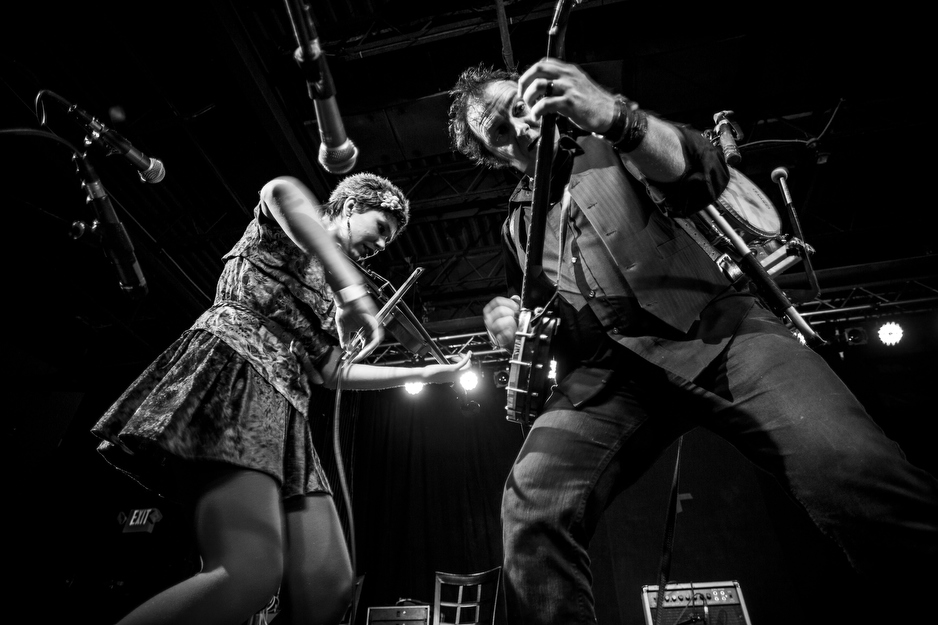
Last year, as I was prepping to move to Norfolk, Phillip released his latest album, The Alpine Butterfly. He and I had a conversation about what was coming next, and he wasn't sure. I got the sense that if something "big" was going to happen, it was going to happen that year. I approached Phillip and his wife about shooting a story to document what was coming next. He put his guts and soul into the album, and I felt like if something was going to happen I should be there to document it.
TID:
Can you describe what was going on in your mind as the image took shape, and then also what you were thinking when you made the image?
JAY:
I was a couple months into the project and one Thursday afternoon I received a text from Phoenix, Phillip's wife. They had a last-minute gig at The Taphouse in Hampton, VA. I got my gear together and headed up there, about 20 minutes away from where I live in Norfolk.
I spent time backstage with Phillip and Phoenix and made a few frames in the green room. The owner of the Taphouse was there, and other musicians, too. The owner had bought a bunch of hats from an estate sale and had them in the green room for musicians to try on and play with. I made a nice pic of Phoenix and Phillip trying on hats in the mirror. It was great to have a fun pic, a lighter moment, in the can.
Being a smaller venue, and having a great relationship with the subject, I had unlimited access. I could go to and from anywhere in the club, on stage, you name it. I had shot a bunch of shows by this point so Phillip was comfortable with me moving around. I always try to keep my movements minimal and I try to stay out of the way as much as possible; I do not want to be a distraction to Phillip and I don't want people in the crowd looking at me and not Phillip. If you want your subject to respect what you are doing, you have to give them the respect they deserve first. This is how you build trust.
When you photograph music, it's two opposing forces. The musician performing on stage and the crowd watching and reacting. It's often hard to bridge that dichotomy. I had a ton of pics of Phillip "lost in the moment" with his banjo and rig, but the pics tend to run together after a while. I wanted something different that spoke to the dynamic of this powerhouse performer and the packed club. The crowd was fully engaged with him and when he gets into a groove, he kind of gets his whole body going. It's intense. I wanted to encapsulate that in a single photograph.
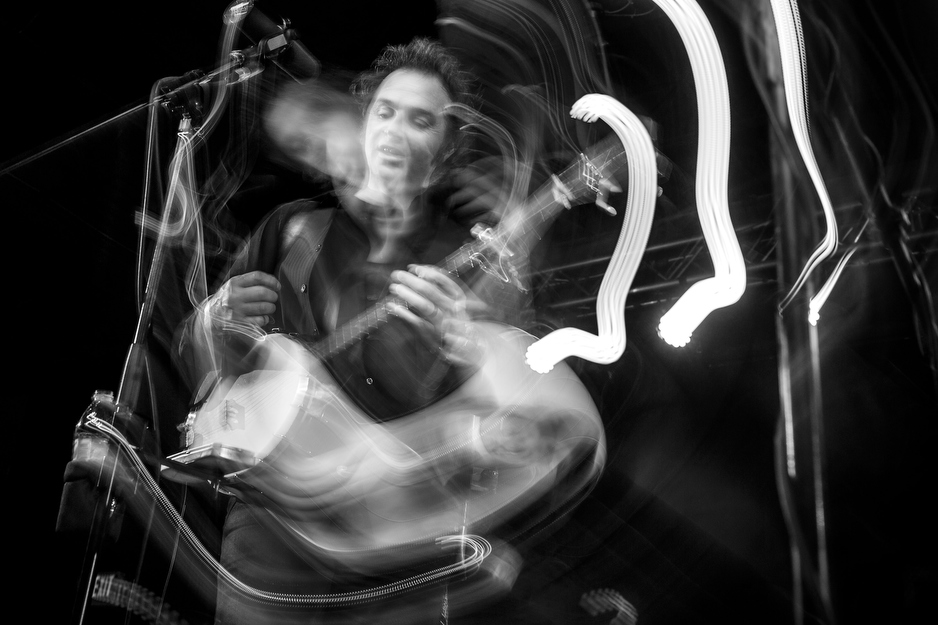
JAY:
I worked the edges of the stage, and at one point a couple women were dancing up front by him. I made frames focusing on them, then focusing on him, but it wasn't quite "it." The confines of the club and stage were such that I knew if I shot from behind him, with my 20mm lens I could get the perspective I wanted. I hate the term "Hail Mary," because that infers that I don't know what I'm going to get; that there's some praying left to do. The fact is, I know exactly what a 20mm lens looks like, and I knew that I wanted an angle from above looking slightly down. I waited for a moment where he got lost in the music, and tripped the shutter.
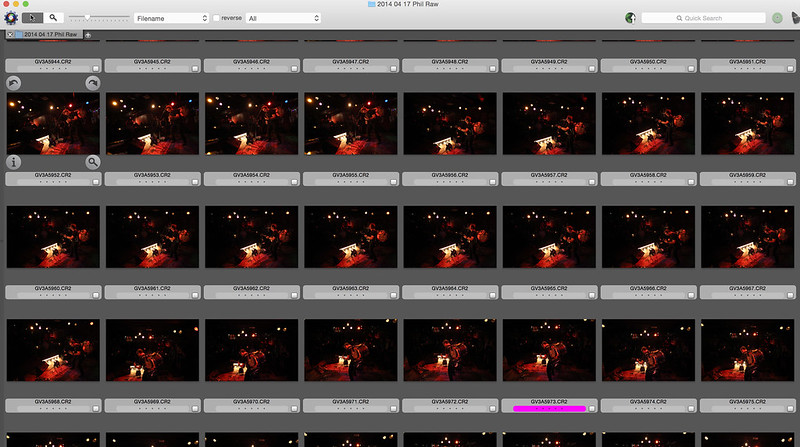
TID:
What were some problems or challenges you encountered during the coverage of this event, and how did you handle them?
JAY:
Lighting at concerts, especially small clubs, is a shit show. I wanted this project to be black and white so luckily when a constant red-gelled light is the only light source, I can deal with it. I strobed one concert and got a few nice frames from that, but for the most part everything was shot with available light, and again with the intention of processing the raw file in black and white.
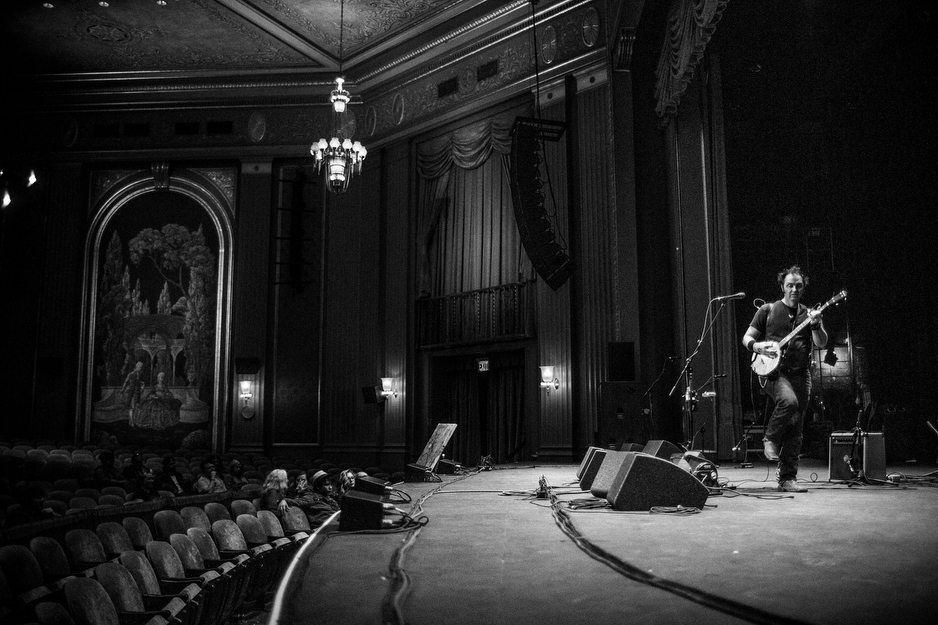
TID:
Could you talk more about how it was shooting a personal project? how did you make the time? Did Phillip ever ask what you were going to do with the images? If so, what did you tell him?
JAY:
This was my first personal, long-term documentary project. I had previously done portrait projects, but nothing like this where I'd keep going back to the subject and capture a narrative. My first love in photography was music photos. I was learning to play guitar in the early 90s while in the Navy and in the pages of a Guitar World Magazine was a spread of Charles Peterson's images from "Screaming Life," his first book of the Seattle music scene. Those pictures blew me away. I was dabbling with photography as a hobby at the time (I was an Electronics Tech in the Navy) and those photos made me feel connected to the music. To have a chance, 20 years later as a professional photographer, to document a musician was a dream come true. It was refreshing to approach this with a plan; I knew I wanted the images in black and white and the contrast and texture of the images were intentional. I wanted consistency. And because it was my project from the start I could dictate those terms.
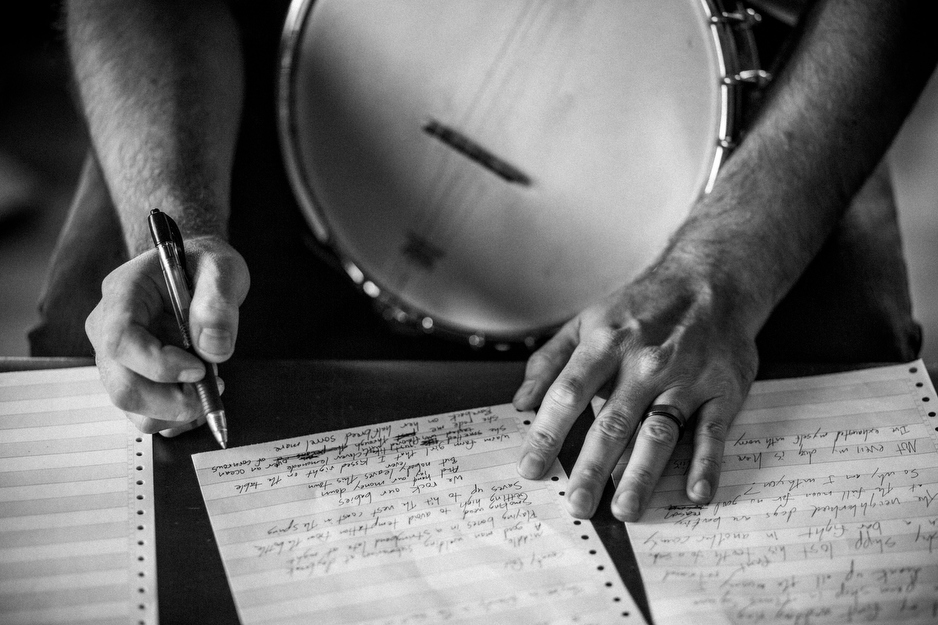
JAY:
I would shoot in between assignments, or make time for road trips or other shoots as needed. But shooting this story was very important to me. Being a full time freelancer I can't always rely on publications and editors to call me. I wanted something that was mine, and I was going to make time for it.
I let Phillip and Phoenix know from the start my goal was to keep going, document as much as possible and ideally pitch the project to a magazine. When I felt I had "enough," (btw, there is never enough) I culled the pictures down and with the help of the amazing Martin Smith-Rodden I had a solid picture story going and sent out some pitches. Ok, a lot of pitches. I poked and prodded an editor at the Post a few times and then she forwarded it to the Magazine. Dudley Brooks, whom I worked with 10 years ago when I worked on the picture desk at the Post, loved the story. He gave it great play in the print edition and online. I'm very thankful for the folks at the Post that helped me put it all together.
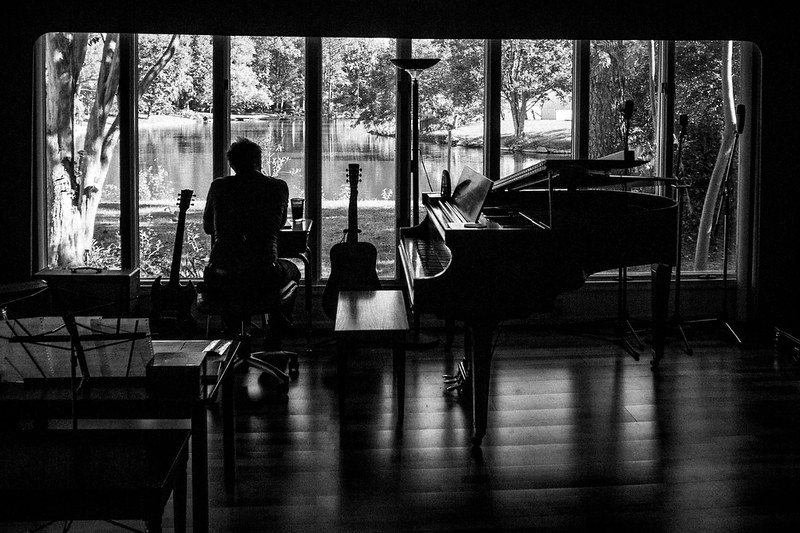
TID:
Was there anything that you learned or put to use in later assignments that come about from this experience?
JAY:
I think the biggest thing I learned was patience. I hadn't really spent an entire year photographing one subject before. It was nice to know that there would be more opportunities to come. I didn't have to sweat missing a song or a particular thing on stage, and it let me put more attention to things off stage and away from the banjo. The key to that was the access, which was built through trust over a period of time.
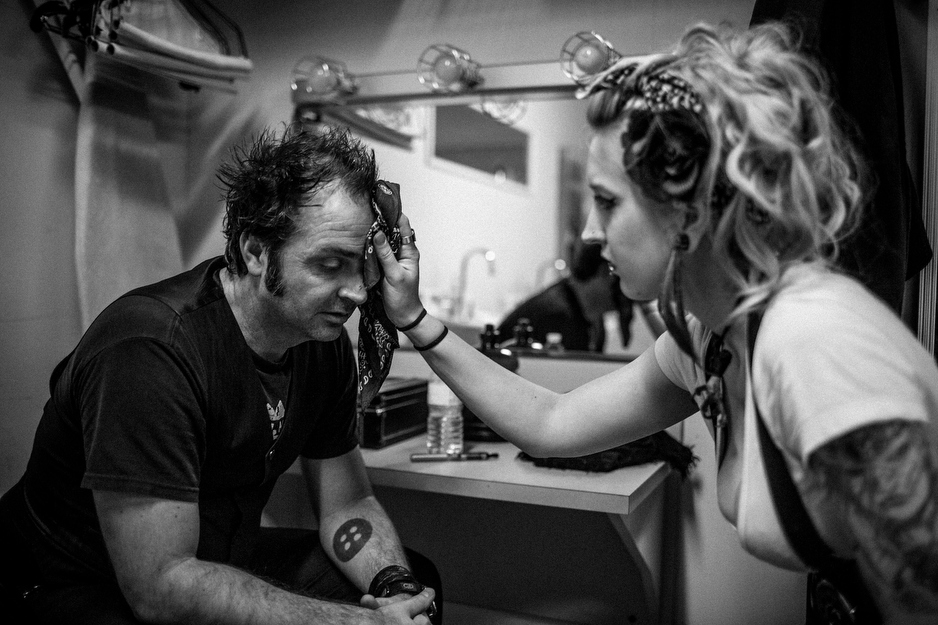
TID:
There are some great photos of Phillip on stage, but the ones that really stand out to me personally are the more intimate moments (in hotel bed, jaccuzzi, etc). How did you communicate that you wanted/needed to be there fo those sort of things?
JAY:
I let Phillip and Phoenix know from the start that I needed access. That to separate this story from others it needed to be intimate. They were extremely agreeable to that. In fact, in one of the pictures, Phoenix is dabbing Phillip's head after his set backstage. Phillip had eaten some pulled pork before the show, and it was his first time eating meat in 6 or 7 weeks. After the set, he felt incredibly nauseous and went to go throw up in the green room bathroom. He closed the door, then Phoenix walks over toward the door and asks me, "do you want to get shots of him throwing up?" She started to open the door and Phillip told her close it. I didn't need a shot of him throwing up, thankfully! Access was not a problem.
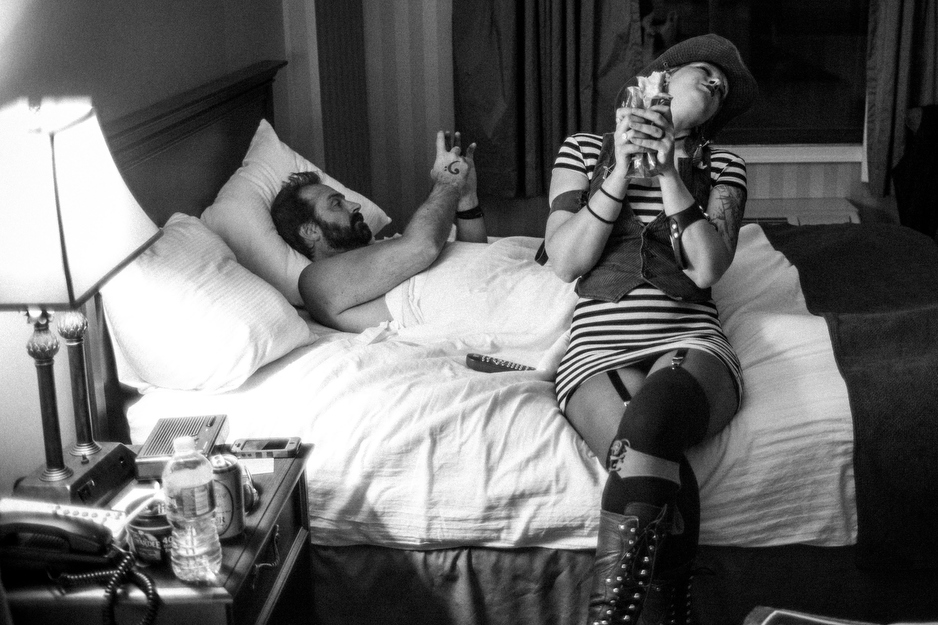
JAY:
The hotel bed was a good moment. Phillip was opening up for The Devil Makes Three at a club in Lancaster, PA on a Thursday night. After the show closed, it was late and we had a hotel room in the city center. There were no restaurants open, not even fast food. Phoenix and I hiked all over looking for food, and Phillip stayed back in the room to decompress. The best we could come up with was a microwave burrito from a gas station for Phoenix and a bowl of Chef Boyardee for me. We got back to the room and Phillip and Phoenix were just doing what they do: Phillip was in bed checking his email, and then Phoenix bit into her burrito. After not having any food for hours, it was the most delicious thing on the planet. They were so used to me taking pictures at that point that they didn't even notice. Phoenix even commented, "You should be shooting!" and I told her, "Don't worry, I did!"
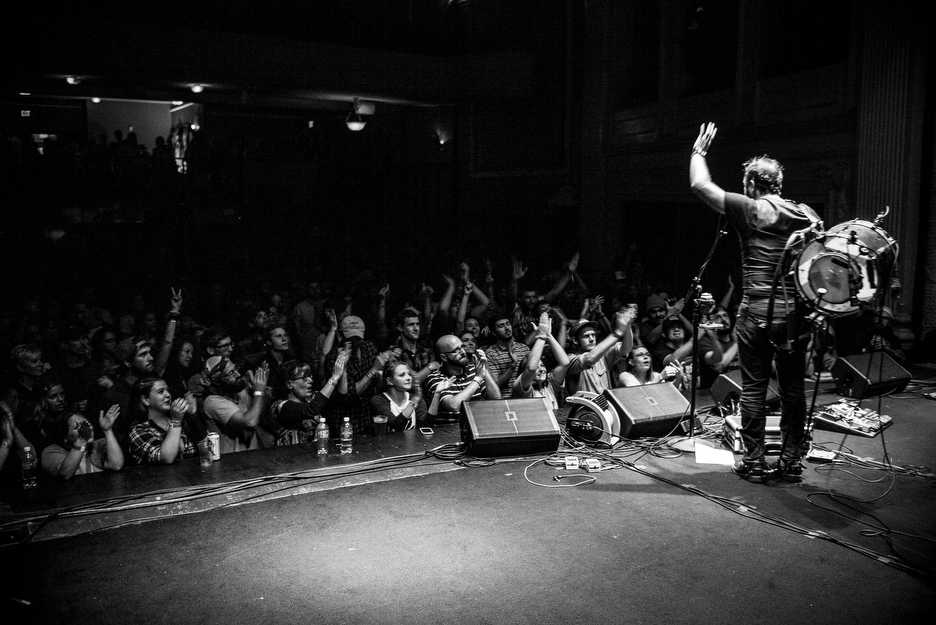
TID:
How did you communicate overall? You mentioned he texted you - how did you explain it would be helpful to let you know what he was doing?
JAY:
I would text with Phoenix about the story and what they were up to. Our communication was, and continues to be, very excellent. Sometimes if I didn't hear from them in a while I would check in and see what was happening. Phillip can be a little reclusive when he's writing, so being able to document his writing process was a treat. That took a bit of cajoling, and I loved the images that came from that.
This work is now my first solo exhibition, at O'Connor Brewing in Norfolk, VA on June 6th, 2015 to June 13th, 2015, with an opening reception and performance by Phillip Roebuck on June 6th.

++++++++++++++++++++++++
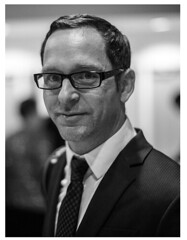
Jay Wescott is an independent photographer with 10 years experience shooting politics, sports, and breaking news. He has worked as a phototech/editor for the Washington Post. a staff photographer at The Washington Examiner, a staffer at TBD.com and most recently as a staff photographer for POLITICO. He is an alum of the Corcoran College of Art and Design and has attended the Eddie Adams Workshop. He has been recognized but the WHNPA, NPPA and VNPA.
He lives in Norfolk VA, working in Hampton Roads and Washington DC. When not working he is riding and ravin bicycles or hiking with his daughter, Lauren.
Web: www.jaywestcott.com
E-mail: [email protected]
Twitter & Instagram: @jwestcottphoto